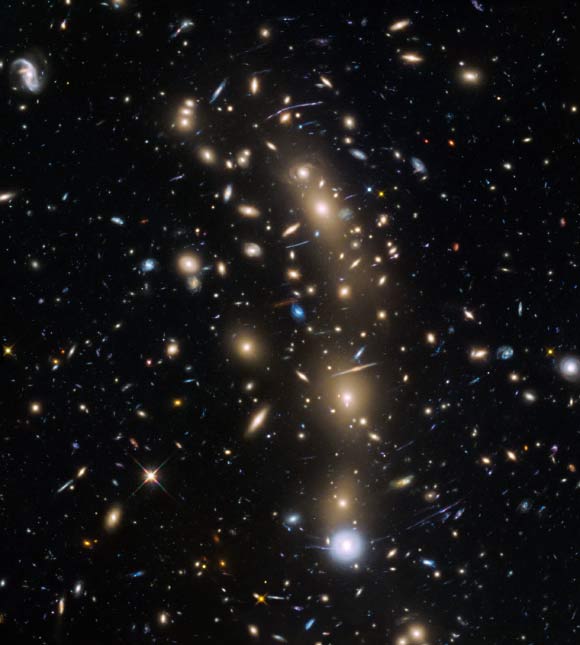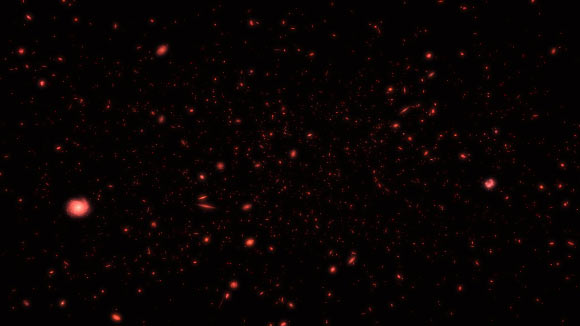Astronomers using the NASA/ESA Hubble Space Telescope have found no evidence of hypothetical first-generation stars — called Population III stars — as far back as when the Universe was just 500 million years old.
The very first stars born after the Big Bang were probably very massive, with masses between 60 and 300 times that of the Sun, and short lived, typically 2 million years.
Unlike the stars of today, these Population III stars would have been solely made out of the few primordial elements (hydrogen, helium and lithium) first forged in the seething crucible of the Big Bang.
ESA astronomer Rachana Bhatawdekar and colleagues set out to study these objects in the early Universe from about 500 million to 1 billion years after the Big Bang.
They used data from the Hubble Frontier Fields program to study a galaxy cluster called MACS J0416.1-2403 and its parallel field.
They also used additional data from NASA’s Spitzer Space Telescope and ESO’s Very Large Telescope.
“We found no evidence of these first-generation Population III stars in this cosmic time interval,” Dr. Bhatawdekar said.

This Hubble image shows the galaxy cluster MACS J0416.1–2403 (MACS0416). This is one of six being studied by the Hubble Frontier Fields program, which together have produced the deepest images of gravitational lensing ever made. Due to the huge mass of the cluster it is bending the light of background objects, acting as a magnifying lens. Image credit: NASA / ESA / HST Frontier Fields Team / STScI.
The Hubble Frontier Fields program produced the deepest observations ever made of galaxy clusters and the galaxies located behind them which were magnified by the gravitational lensing effect.
The masses of foreground galaxy clusters are large enough to bend and magnify the light from the more distant objects behind them. This allows Hubble to use these cosmic magnifying glasses to study objects that are beyond its nominal operational capabilities.
Dr. Bhatawdekar and colleagues developed a new technique that removes the light from the bright foreground galaxies that constitute these gravitational lenses.
This allowed them to discover galaxies with lower masses than ever previously observed with Hubble, at a distance corresponding to when the Universe was less than a billion years old.
At this point in cosmic time, the lack of evidence for Population III stars and the identification of many low-mass galaxies support the suggestion that these galaxies are the most likely candidates for the reionization of the Universe.
This period of reionization in the early Universe is when the neutral intergalactic medium was ionized by the first stars and galaxies.
“These results have profound astrophysical consequences as they show that galaxies must have formed much earlier than we thought,” Dr. Bhatawdekar said.
“This also strongly supports the idea that low-mass/faint galaxies in the early Universe are responsible for reionization.”
The astronomers presented their results this week at the 236th Meeting of the American Astronomical Society (AAS).
_____
R. Bhatawdekar & C. Conselice. 2020. Studying the high redshift Universe combining HST, JWST and the power of gravitational lensing. AAS 236, abstract # 307.03








